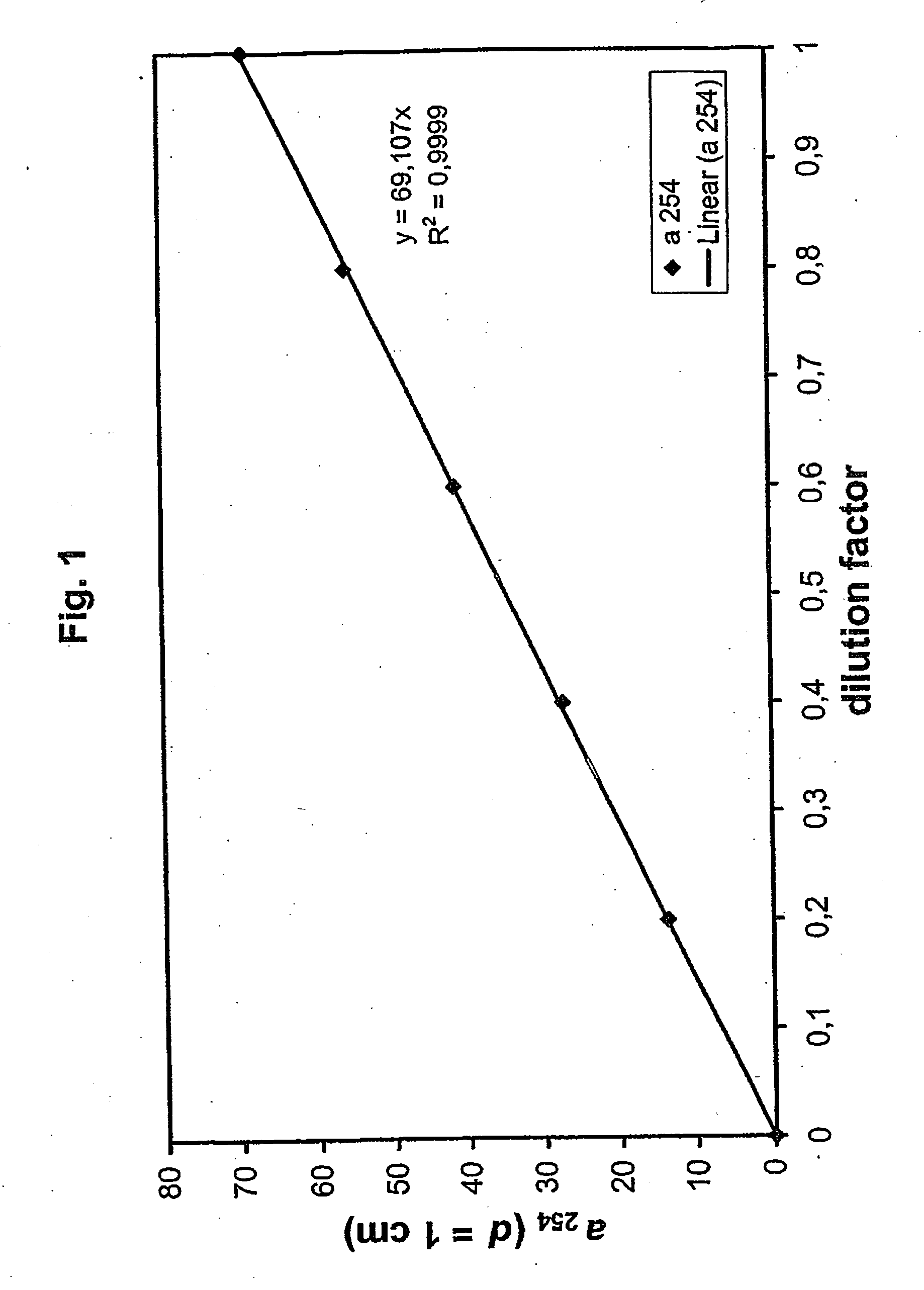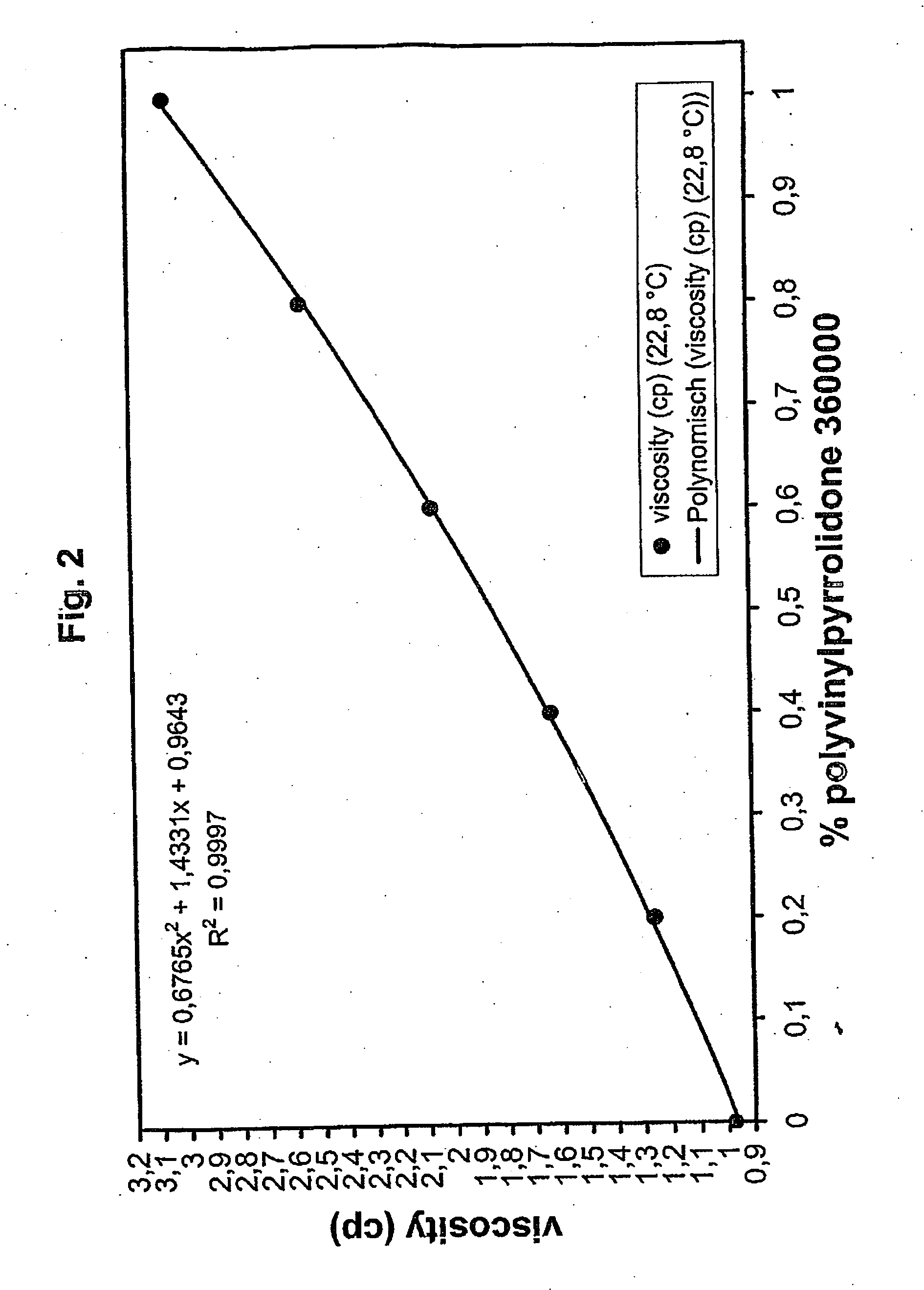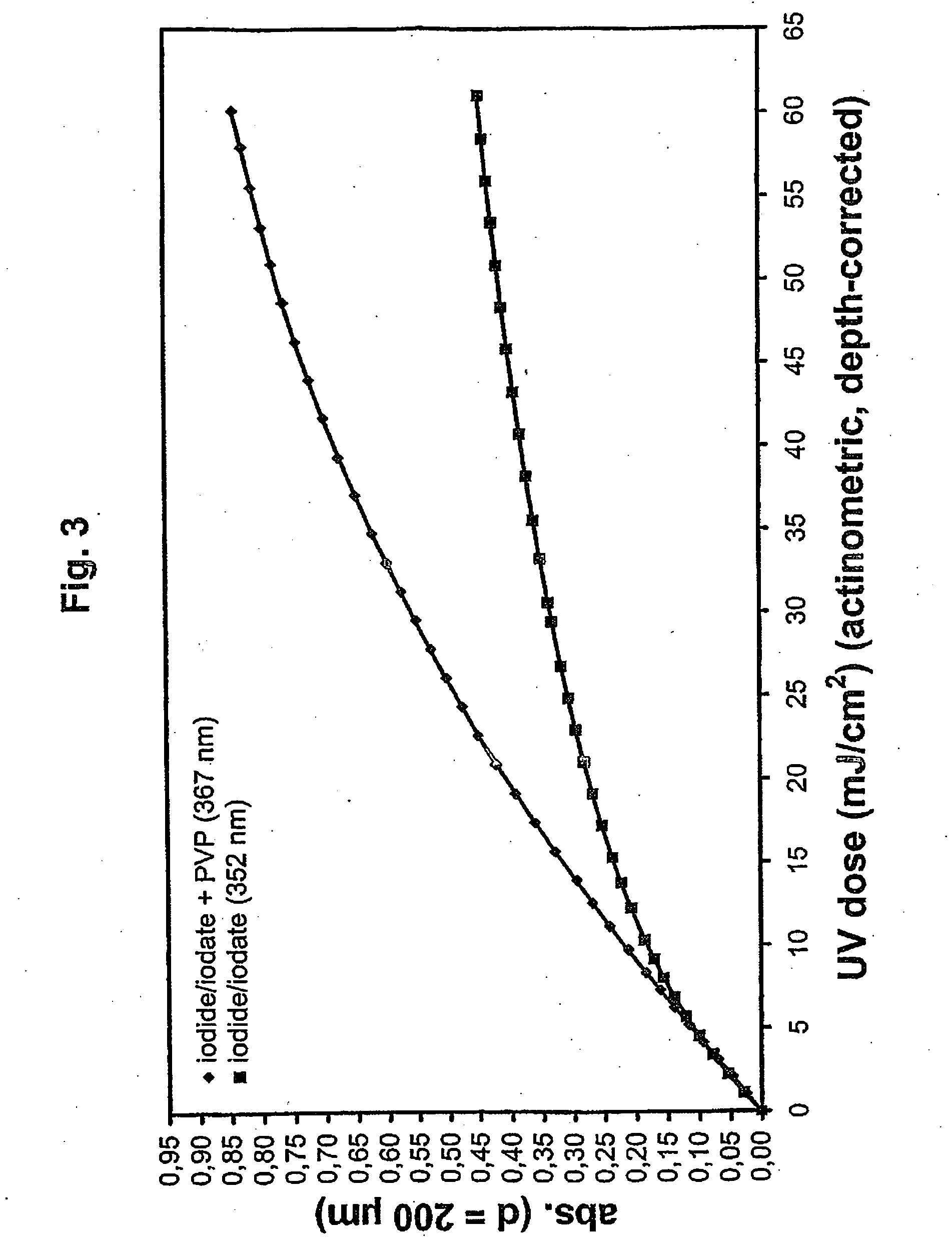Method for the validatable inactivation of pathogens in a biological fluid by irradiation
a biological fluid and pathogen technology, applied in the field of batch irradiation, can solve the problems of ineffective uv-b in pathogen inactivation, too little uv-c energy may actually reach the pathogen, and require excessively high doses of inactivation
- Summary
- Abstract
- Description
- Claims
- Application Information
AI Technical Summary
Benefits of technology
Problems solved by technology
Method used
Image
Examples
example 1
Absorption Coefficients of the Iodide / Iodate Actinometer Solution at High Dilution, Dosimetric Response of the Iodide / Iodate Actinometer Solutions, and Stabilization of the UV-C Generated Tri-Iodide by Polyvinylpyrrolidone
[0125] A solution containing 0.24 M KI and 0.04 M in 0.01 M borate buffer, pH=9.25, was diluted 0.2-, 0.4-, 0.6 and 0.8-fold with 0.01 M borate buffer and the absorption measured in a 0.1 mm cuvette. FIG. 1 shows that the absorption coefficient depends in a linear-ratio (a253.7=69 / cm×dilution factor) on the concentration.
[0126] A solution containing 10 g polyvinylpyrrolidone K90 (PVP K90; average molar mass 360000 Da) in 1 L 0.01 M borate buffer was diluted 0.2-, 0.4-, 0.6-, 0.8-fold and the viscosity of the dilutions and the buffer were measured in a Schott 0.40 mm Ubbelohde capillary viscosimeter thermostated at 22.8° C. It can be seen from FIG. 2 that the viscosity increases with the concentration in a non-linear ratio.
[0127] Dilutions of the stock solution c...
example 2
Determination of the Irradiation Time in a Batch Photoreactor with Fixed Geometry with Actinometric Dosimetry Solutions
[0129] Dosimetry solutions with decadic absorption coefficients a253.7 of 2.1 / cm (0.0072 M KI+0.0012 M KIO3+0.5 g PVP K90 / L, for FVIII concentrate), 6.1 / cm (see Example 1), 10 / cm (0.0346 M KI+0.0058 M KIO3+1.21 g PVP K90 / L; for a 2% (w / v) immunoglobulin G solution), and 16 / cm (see Example 1) were prepared and calibration plots recorded as described in Example 1. A quartz test tube 4 cm in diameter was filled with 100 mL dosimetry solution, stirred with a magnetic stirrer bar on a magnetic stirrer, and irradiated between 2 low-pressure mercury vapor lamps equipped with polished stainless steel reflectors. At predefined intervals, samples were drawn and filled into the 0.2 mm cuvettes for spectrophotometric measurement, and the dose was read out from the calibration plot. The dose-rate was then calculated as (mJ / cm2) / min, and the inverse dose rate, i.e. the specific ...
example 3
Inactivation of MMV and Phi-X 174 in Thin Layer- and Batch Irradiation
[0131] MMV stock solution from cell culture supernatant (˜108 tissue-culture infectious doses (TCID50) / mL) and bacteriophage Phi-X 174 lysate (˜1×109 plaque-forming units (PFU) / mL) from propagation in Escherichia coil were diluted in 20 mM phosphate-buffered 0.15 M NaCl (phosphate-buffered saline, PBS) and 2.5 mL were irradiated with different UV-C doses in 32 mm polystyrene petri dishes shaken horizontally under a CAMAG TLC lamp. The irradiance at the sample surface distance was determined with a Dr. Groebel RM21-radiometer with a daylight-blind UV-C sensor, and the self-absorbance of the solution measured in a spectrophotometer to correct for the effective fluence (UV dose) (Morowitz 1950). MMV and Phi-X 174 titers were determined by titration on host cell culture and host bacteria respectively.
log10 pfu Phi-XUV doselog10 TCID50UV dose (mJ / cm2)174 / mL(mJ / cm2)MMV / mL0.006.4106.542.255.7925.314.504.3744.426.753.4...
PUM
| Property | Measurement | Unit |
|---|---|---|
| penetration depth | aaaaa | aaaaa |
| wavelengths | aaaaa | aaaaa |
| wavelengths | aaaaa | aaaaa |
Abstract
Description
Claims
Application Information
 Login to View More
Login to View More - R&D
- Intellectual Property
- Life Sciences
- Materials
- Tech Scout
- Unparalleled Data Quality
- Higher Quality Content
- 60% Fewer Hallucinations
Browse by: Latest US Patents, China's latest patents, Technical Efficacy Thesaurus, Application Domain, Technology Topic, Popular Technical Reports.
© 2025 PatSnap. All rights reserved.Legal|Privacy policy|Modern Slavery Act Transparency Statement|Sitemap|About US| Contact US: help@patsnap.com



